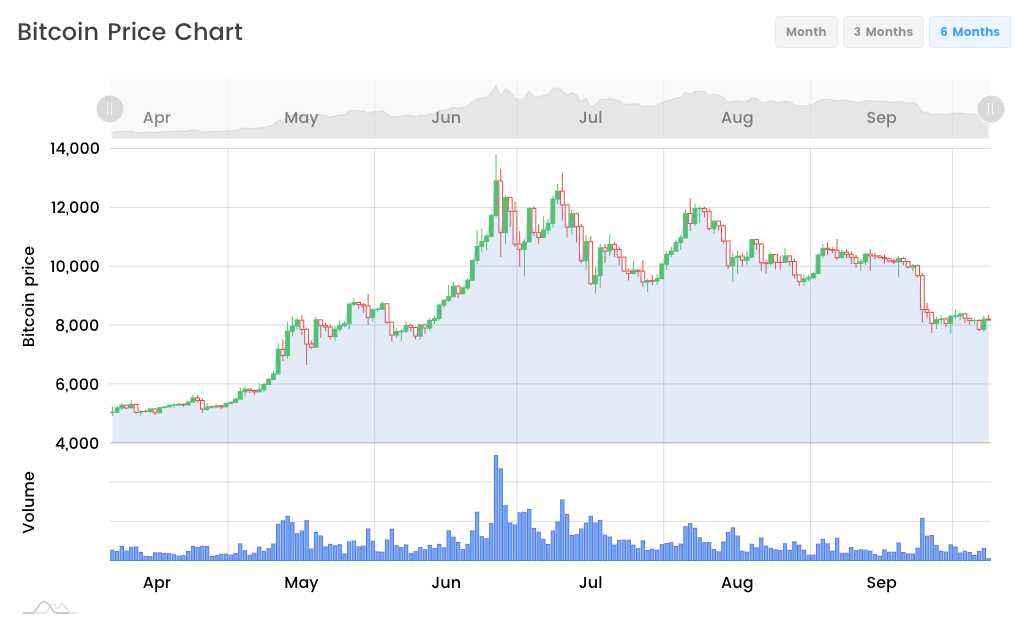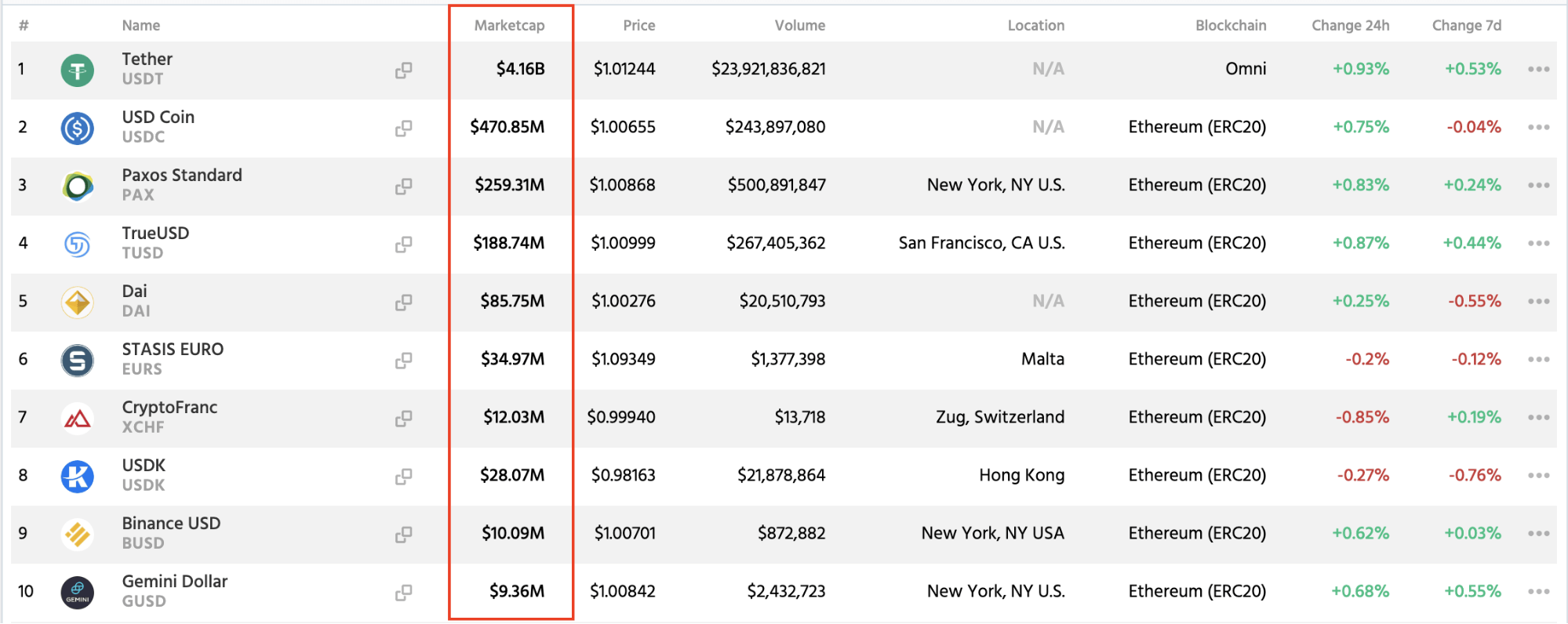Traditional financial markets are heavily influenced by macroeconomic factors that stem primarily from global governments and large corporations. Here, the Forex Market determines the worth of established currencies by taking into consideration the varying factors involved in the buying and exchanging them.
Situated a world away stands the crypto financial market - which is built on the foundations of decentralisation and non-governmental control. Where traditional finance leaves governments free to call on fiscal and monetary tools as a means of keeping their respective national currencies stable, the world of cryptocurrencies has no such influencers.
Because of these central influences, the traditional finance market is far more susceptible to the actions of external forces, and their attempts to stabilise world currencies. One pertinent example of this comes in the form of quantitative easing, which is the act of deliberately flooding an economy with printed money in a bid to reduce the price of a currency in order to leverage a favourable balance of trade.
State banks, the IMF and WTO are all big players when it comes to making sure that all recognised currencies are stabilised against the US Dollar. The practice of anchoring currencies to the Dollar began towards the end of World War Two, when, after hefty rounds of negotiations, the Bretton Woods System was created. This effectively led to the widespread recognition of the US Dollar as the international reserve currency - and all currencies have been fixed against it since.
While global financial markets haven’t always made for smooth sailing, most Kenyesian economists would acknowledge that such interventionist policies are vital for ensuring that global economies remain as stabilised as possible. But how can these practices work for the cryptocurrency landscape? The world of crypto is one that likes to thrive on refuting governmental control and international institutions - with their decentralised nature and unhinged markets sparking something of a 21st Century gold rush in recent years.
Regardless of your perception of cryptocurrencies, it’s hard to deny that they’re both exciting and fascinating in equal measure. The crypto market is free of control or regulation and fluctuates based primarily on supply and demand. In a nutshell, if more people decide to invest in a particular digital currency, its value will rise, and if its supply drops, its value will increase further. Naturally, this means that once demand begins to dwindle, so too will a coin’s value.
The perfect example of the influence that supply and demand have on the market can be seen in Bitcoin’s famous bull run of late 2017. Each time Bitcoin reached a new record-breaking value, its presence in world news increased exponentially, leading to greater demand and astronomical prices. By mid-December in 2017, Bitcoin was trading at close to $20,000.
When it comes to traditional forms of finance, fiscal government policies surrounding taxation and budgeting can regulate their currencies. Without these institutions, the world of crypto can resemble the Wild West as much as it does Wall Street at times - a highly-volatile and speculative landscape where chaos is commonplace.
Why should stabilising cryptocurrencies matter?
If the crypto market has any hope of entering the world of mainstream usage, it’s essential that it finds stability. Fundamentally, digital currencies like their tangible counterparts, operate as a storage of value. If we’re expected to be buying our groceries with Bitcoin in a decade’s time, the only way of it happening is by instilling an element of predictability and trust in the crypto marketplace.
For a cryptocurrency to be a trustworthy global currency, stability is absolutely essential.

Since the arrival of Bitcoin over ten years ago, the stabilising strategy has merely involved embracing the chaos and living with the volatility. Aggressive twists and turns in market performance have left traders and investors gambling on each trough being followed by a fresh peak - resulting in an erratic rollercoaster of a marketplace that many economists steer clear of.
Despite the volatility, much of the crypto market takes pride in rejecting the influence of external forces that are widely present within more traditional finance. However, there are some long term strategies in place that focus on improving the role of cryptocurrencies in the financial world - some of which involve learning a few lessons from tangible finance.
Reputation management
Despite gaining widespread attention, it’s important to remember that the crypto market is relatively small and thus susceptible to large-scale trades and ‘pump and dump’ schemes. Smaller coins are especially prone to being artificially inflated and deflated by large-scale market transactions.
Such effects are damaging to the levels of trust that prospective investors have in the market, and can only be stamped out when more individuals enter the market and trading volumes increase. Thus, it’s reasonable to expect anticipate widespread stability arriving alongside mass-adoption.
However, this notion alone is unlikely to single-handedly quash the volatile nature of the crypto landscape. Similarly to the Forex Market, investors are likely to instigate panic-based sell-offs when the market is in decline. This strain of behaviour is commonplace in bear markets and often lead to an array of currencies falling in value.
Bear markets act as a repellent to prospective investors. When these periods occur, adoption of cryptocurrencies is low. However, stablecoins are designed to minimise the erratic nature of coin values in the market. Structurally pegged to a cryptocurrency, fiat money, or an alternative exchange-traded commodity, stablecoins remain relatively static - depending on the asset that they’re anchored to.
The top five stablecoins in the market today, led by the likes of Tether and USD Coin, have a combined total market cap of $5 billion.

Secured Algorithmic stablecoins like Timvi (TMV) are structured to hold their price in the face of market volatility, and their prices rarely deviate from approximate parity to the US Dollar. As you can note below, most stablecoins are more or less equivalent to the USD.
The coming months and years promise to be pivotal in the world of the stablecoin. Facebook is set to release Libra in early 2020, despite a recent pull out of key backers like PayPal and Mastercard. Such speculation has caused widespread excitement across crypto markets, but Tether remains the market leader when it comes to stablecoins.
Tether has led a curious lifespan, and despite the digital currency struggling to gain traction and being forced into a rebrand in 2014 - not to mention being the subject of multiple lawsuits - the coin has achieved a market cap of over $4 billion and will take some toppling as the worlds favourite stablecoin.
While Tether operates as a centralised stablecoin - meaning that its currency technically has an owner and is centrally stored, there are other popular cons like DAI which offer a full decentralisation. The reason that DAI is capable of offering decentralisation and its accompanying transparency is because the cryptocurrency is tethered to Ethereum’s blockchain network.
In traditional finance, the potentially disastrous consequences of a run on the bank can logically be mitigated by government intervention and controlling measures. However, such tactics won’t be on-hand to help prevent the decline of any single virtual currency because there’s no central point of control. So what lessons can we learn from our more traditional predecessors?
Learning lessons
One effective solution in solving stability issues within traditional markets has been found in the implementation of futures, options, forwards and swaps. These kinds of arrangements can work wonders in stabilising prices because they offer access to currency at a pre-determined fixed-price - and allow two parties to negotiate directly without the use of an exchange.
When it comes to the low-liquidity crypto market, futures can help to promote greater transparency, reduce market manipulation and encourage mass-adoption. So with more investors comes a sizeable influx of capital that helps to stabilise prices and minimise the room for pump and dump investors to operate.
Governmental regulation of the financial market isn’t limited to interventionalist fiscal and monetary policies. Institutions like the world bank and IMF actively regulate, promote, and conserve fair exchanges. For true stability to exist, such institutional regulations could be widely beneficial for the crypto markets.
While it’s important to acknowledge that cryptocurrencies benefit from plenty of freedom that wouldn’t be possible in a fully centralised landscape. However, this doesn’t remove the need for regulatory presence.
Regulating bodies can play a pivotal role in mediating the public and the market. Accurate information on the legalities associated with the crypto market can additionally help to remove its off-putting associations with the drugs trade and dark web.
With the added safety of regulated markets, it’s fair to anticipate the arrival of new investors, ready to engage in a trustworthy financial ecosystem.
It’s clear for all to see that the crypto market is far from stable. Yet, there are still plenty of opportunities and benefits that can be found in that will boost transparency and bring an unprecedented level of trust in the usage of digital currencies. In a stable and well-regulated market, cryptocurrencies have a chance to shake off its negative connotations and ease into widespread adoption. Perhaps we’ll be using Bitcoin to do our grocery shop in the not-too-distant future after all?
All views and opinions expressed in this article are the opinions of the author and not FXStreet. Trading cryptocurrencies or related products involves risk. This is not an endorsement to invest in or trade any of the cryptocurrencies, stocks or companies mentioned in this article.
Recommended Content
Editors’ Picks

Bitcoin, Ethereum and XRP steady as China slaps 125% tariff on US, weekend sell-off looming?
The Cryptocurrency market shows stability at the time of writing on Friday, with Bitcoin (BTC) holding steady at $82,584, Ethereum (ETH) at $1,569, and Ripple (XRP) maintaining its position above $2.00.

Bitcoin Weekly Forecast: Market uncertainty lingers, Trump’s 90-day tariff pause sparks modest recovery
Bitcoin price extends recovery to around $82,500 on Friday after dumping to a new year-to-date low of $74,508 to start the week. Market uncertainty remains high, leading to a massive shakeout, with total liquidations hitting $2.18 billion across crypto markets.

Bitcoin, Ethereum, Dogecoin and Cardano stabilze – Why crypto is in limbo
Bitcoin, Ethereum, Dogecoin and Cardano stabilize on Friday as crypto market capitalization steadies around $2.69 trillion. Crypto traders are recovering from the swing in token prices and the Monday bloodbath.

Can FTX’s 186,000 unstaked SOL dampen Solana price breakout hopes?
Solana price edges higher and trades at $117.31 at the time of writing on Friday, marking a 3.4% increase from the $112.80 open. The smart contracts token corrected lower the previous day, following a sharp recovery to $120 induced by US President Donald Trump’s 90-day tariff pause on Wednesday.

Bitcoin Weekly Forecast: Market uncertainty lingers, Trump’s 90-day tariff pause sparks modest recovery
Bitcoin (BTC) price extends recovery to around $82,500 on Friday after dumping to a new year-to-date low of $74,508 to start the week. Market uncertainty remains high, leading to a massive shakeout, with total liquidations hitting $2.18 billion across crypto markets.

The Best brokers to trade EUR/USD
SPONSORED Discover the top brokers for trading EUR/USD in 2025. Our list features brokers with competitive spreads, fast execution, and powerful platforms. Whether you're a beginner or an expert, find the right partner to navigate the dynamic Forex market.